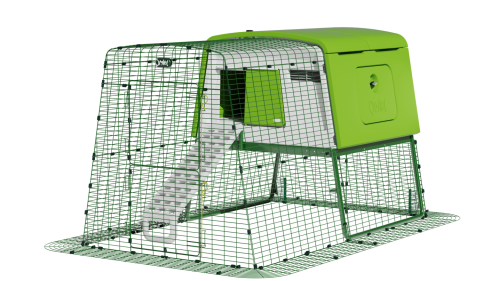Ixworth Chickens
Ixworth History
Ixworth Behaviour
Ixworth Status
Ixworth Pictures







Ixworth For Sale
Latest Reviews For Ixworth (5 of 8)
Chatty!!! - Lynn,
I hatched 16 chicks last year, 2013. They were handled daily and are very friendly They enjoy free ranging but if they are confined to their run they seem happy The cockerels are a nice temperament, no aggression Would recommend them. They look beautiful, they are white, like fresh snow
Great birds - Steve,
I have kept ixworths for three years. friendly (if handled) quiet birds who lay well - light tint egg (not brown). i like the white look and pea comb they just look so clean cut - nothing fancy. Good foragers and easy to keep. I have had no problems with them and they are very hardy. As a meat bird I have to say they are great - taste and texture are excellent. I would recommend to anyone looking for a dual purpose bird. Just get them from a good breeder with large healthy stock and you shouldnt go wrong.
Ixworths and other breeds - Robbieb,
I recently acquired 3 Ixworths and have since had to pass them on due to aggressive behaviour by them all. This might have been a one off but the other 8 hens i got settled very well with no problems. The story could have been different if they were in a larger free range area, and it didn't stop all 3 laying some nice eggs on day one, so don't be put off by the breed because as i say it may have been a one off.
Strong easy care hen. Recomendable - Mark,
These hens have been excellent. Survived an exceptionally cold winter (a week at -18'C) in good health before beginning to lay in mid march. Both hens were managing 3 eggs in 4 days before one went broody, broody now sitting well on 15 eggs so fingers crossed.
Very under-rated pure breed - An Omleteer,
Ixworth fowl I believe are perhaps rather under-rated as egg producers. My birds lay around 5/7 days of the week, a good medium sized very pale tinted egg. They free range exceedlingly well, and will forage most of their food if given the chance. This property also makes them slightly less garden friendly than some other breeds. The breed is very hardy, starting with at the chick stage. As growers and adults they would rather be outside in the rain than cooped up in the house. As table birds, they are not a fast maturing as hybrids. 25-28 weeks will bring a good oven-ready bird of 6lb upwards (if from a srping hatch)...but the flavour and the texture really are unsupassed (IMHO) by anything else I have tried The roosters are good natured fellows, and will quite happily be enclosed together until this age (as long as there are no hens in the run)





